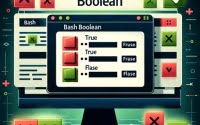How to Install Java on Windows: Step-by-Step

Are you finding it challenging to install Java on your Windows machine? You’re not alone. Many developers find this task a bit daunting, but there’s a solution that can make this process a breeze.
Think of Java as a powerful tool that allows you to build versatile applications. From desktop applications to web services, Java’s wide use makes it a must-have for every developer.
This guide will walk you through the process of installing Java on Windows, from downloading the Java Development Kit (JDK) to setting up your environment variables. We’ll cover everything from the basics to more advanced techniques, as well as troubleshooting common issues.
So, let’s dive in and start mastering Java installation on Windows!
TL;DR: How Do I Install Java on Windows?
To
install Java on Windows, you need todownload the latest Java Development Kit (JDK) from Oracle's website, run the installer, and set up your environment variables.Here’s a quick overview of the process:
# Step 1: Download JDK from Oracle's website
# Visit https://www.oracle.com/java/technologies/javase-jdk11-downloads.html
# Step 2: Run the installer
# Open the downloaded file and follow the installation prompts
# Step 3: Set up environment variables
# Add the path to the installed JDK to the 'Path' environment variable in System Properties
This is a simplified version of the process, but don’t worry if it seems overwhelming. We’ll break down each step in detail in the following sections. So, if you’re ready to get Java up and running on your Windows machine, keep reading!
Table of Contents
Downloading the Java Development Kit (JDK)
The first step in installing Java on your Windows machine is downloading the Java Development Kit (JDK). The JDK is a software package that includes everything you need to write, compile, and run Java applications.
Here’s how you can download the JDK from the official Oracle website:
# Step 1: Visit the Oracle JDK Download page
# Open your web browser and go to https://www.oracle.com/java/technologies/javase-jdk11-downloads.html
# Step 2: Choose the appropriate JDK version
# Select the 'Windows' option under the 'Java SE Development Kit 11.0.11'
# Step 3: Download the JDK
# Click on the 'jdk-11.0.11_windows-x64_bin.exe' file to start the download
During the download process, you’ll be asked to agree to Oracle’s end-user license agreement. Make sure to read it carefully before proceeding with the download. Once you’ve completed the download, you’re ready to move on to the next step: running the installer.
Running the Java Installer on Windows
Once you’ve downloaded the JDK, the next step is to run the installer. This process will install the Java Development Kit on your machine, allowing you to compile and run Java applications. Here’s how you do it:
# Step 1: Open the Installer
# Navigate to your downloads folder and double-click on the 'jdk-11.0.11_windows-x64_bin.exe' file to launch the installer
# Step 2: Follow the Installation Prompts
# The installer will guide you through the setup process. Click 'Next' to proceed with the installation.
# Step 3: Choose Installation Location
# By default, the JDK will be installed in the 'Program Files' directory. If you want to change this, click 'Change' and select your preferred directory. Click 'Next' to continue.
# Step 4: Install
# Click 'Install' to begin the installation process. Once the installation is complete, click 'Close'.
Congratulations! You’ve successfully installed the Java Development Kit on your Windows machine. But we’re not done yet. The next step is to set up your environment variables, which we’ll cover in the next section.
Setting Up Java Environment Variables
After installing the JDK, you need to set up environment variables on your Windows machine. This step is crucial as it allows your system to locate and use the JDK installation for development.
Here’s how to set up your environment variables:
# Step 1: Open System Properties
# Right-click on 'This PC' and select 'Properties'. Click on 'Advanced system settings'.
# Step 2: Access Environment Variables
# In the 'System Properties' window, click on the 'Environment Variables' button.
# Step 3: Edit 'Path' Variable
# In the 'System variables' section, find and select the 'Path' variable, then click 'Edit'.
# Step 4: Add JDK Path
# Click 'New' and add the path to your JDK installation (e.g., 'C:\Program Files\Java\jdk-11.0.11\bin'). Click 'OK' to save.
By setting up the environment variables, you’re telling your system where to find the Java commands. Now, whenever you use a Java command in your command prompt, your system will know where to look.
To verify that everything is set up correctly, open a new command prompt and type java -version. You should see the version of the Java Development Kit you installed.
java -version
# Output:
# java version "11.0.11" 2021-04-20 LTS
# Java(TM) SE Runtime Environment 18.9 (build 11.0.11+9-LTS-194)
# Java HotSpot(TM) 64-Bit Server VM 18.9 (build 11.0.11+9-LTS-194, mixed mode)
If you see the above output, congratulations! You’ve successfully installed Java on your Windows machine and set up the environment variables correctly.
Troubleshooting Java Installation Issues
While installing Java on Windows is generally a straightforward process, you might encounter some issues along the way. Don’t worry – these are common, and we’ve got you covered. Let’s go over some of the most frequently encountered problems and their solutions.
Error: Could Not Find or Load Main Class
This is a common error message that you might encounter when trying to run a Java program. It usually means that the Java Virtual Machine (JVM) couldn’t find the class you specified.
java HelloWorld
# Output:
# Error: Could not find or load main class HelloWorld
This error can occur due to several reasons, such as:
- The class file doesn’t exist.
- The class file is in a different directory.
- There’s a mistake in the class name.
To fix this error, ensure that your class file exists, is in the correct directory, and that you’ve spelled the class name correctly.
Environment Variables Not Set Correctly
If you’ve followed the steps to set up the environment variables and still can’t run Java from the command line, it’s possible that the environment variables were not set correctly.
java -version
# Output:
# 'java' is not recognized as an internal or external command, operable program or batch file.
This error usually means that the system can’t find the ‘java’ command. To fix this, revisit the environment variable setup process and make sure that the path to your JDK installation is correctly added to the ‘Path’ variable.
Remember, troubleshooting is part and parcel of the installation process. Don’t be disheartened if you run into issues – they’re stepping stones on your path to mastering Java on Windows!
Understanding Java and the JDK
Before diving into installation, let’s take a step back and discuss why Java and the Java Development Kit (JDK) hold such a pivotal role in software development.
Java is an object-oriented programming language known for its ‘write once, run anywhere’ philosophy. This means that once you’ve written a Java program, it can run on any device that has a Java Runtime Environment (JRE).
But what’s the role of the JDK in all this? Well, the JDK is a software package that contains tools needed to develop Java applications. It includes the Java Runtime Environment (JRE), an interpreter/loader (java), a compiler (javac), an archiver (jar), a documentation generator (javadoc), and other tools necessary in Java development.
# To compile a Java program, you'd use the 'javac' command
javac HelloWorld.java
# This command creates a HelloWorld.class file, which is the bytecode representation of your program.
# To run the program, you'd use the 'java' command
java HelloWorld
# Output:
# Hello, World!
In the above example, we used the ‘javac’ command to compile a Java program and the ‘java’ command to run it. These commands are part of the JDK, which is why it’s necessary to install the JDK on your machine to develop Java applications.
So, by installing Java on Windows, you’re setting up a powerful development environment on your machine. It’s the first step towards building robust, platform-independent applications.
Exploring the World of Java
Java’s versatility extends beyond just desktop applications. It’s used in web development, mobile app development, game development, and even in creating enterprise-scale systems. Let’s delve deeper into some of these areas.
Java in Web Development
Java is extensively used in building dynamic web applications. With frameworks like Spring and Struts, developers can create robust, secure, and efficient web applications.
Java in Mobile App Development
Java is the primary language used for Android app development. With millions of Android users worldwide, mastering Java opens up a vast market for your applications.
Java in Game Development
Java’s platform-independent nature makes it an excellent choice for game development. Games built in Java can run on any device with a Java Runtime Environment, making them accessible to a wide audience.
Further Resources for Java Mastery and Installation
Ready to dive deeper into the world of Java? Here are some resources to help you on your journey:
- How to Install Java on Ubuntu: Complete Guide – Discover the commands to install Java on Ubuntu effortlessly.
Downloading Java for Windows 10 – Access the latest Java version for Windows 10 with a simple download process.
Java Versions Overview – Explore the evolution of Java versions from the early releases to the latest updates.
Oracle’s Official Java Tutorials cover everything from basic concepts to advanced topics in Java.
Java Installation Guide by Java.com provides instructions for manually downloading and installing Java on Windows.
Codecademy’s Learn Java Course offers hands-on experience in writing Java code.
By installing Java on your Windows machine, you’ve taken the first step into a wider world of development opportunities. Keep exploring, keep coding, and enjoy the journey!
Wrapping Up: Java Installation on Windows
In this comprehensive guide, we’ve delved into the process of installing Java on your Windows machine, a critical first step in your journey as a Java developer.
We started with the basics, guiding you through the process of downloading the Java Development Kit (JDK) from Oracle’s official website. We then moved on to running the installer, a step that transforms the downloaded package into a functional Java development environment on your machine.
The next part of our journey took us into more advanced territory, where we set up environment variables. This crucial step allows your system to locate and use the JDK for development purposes. We also discussed common issues you might encounter during the installation process and provided solutions to help you overcome these challenges.
Java’s importance in the world of software development cannot be overstated. From building dynamic web applications to creating robust Android apps, Java’s versatility makes it a must-have skill for every developer. With the JDK installed on your Windows machine, you’re well on your way to tapping into the power of Java.
Whether you’re a beginner taking your first steps in Java or an experienced developer setting up a new machine, we hope this guide has made the process of installing Java on Windows easier. Happy coding!


